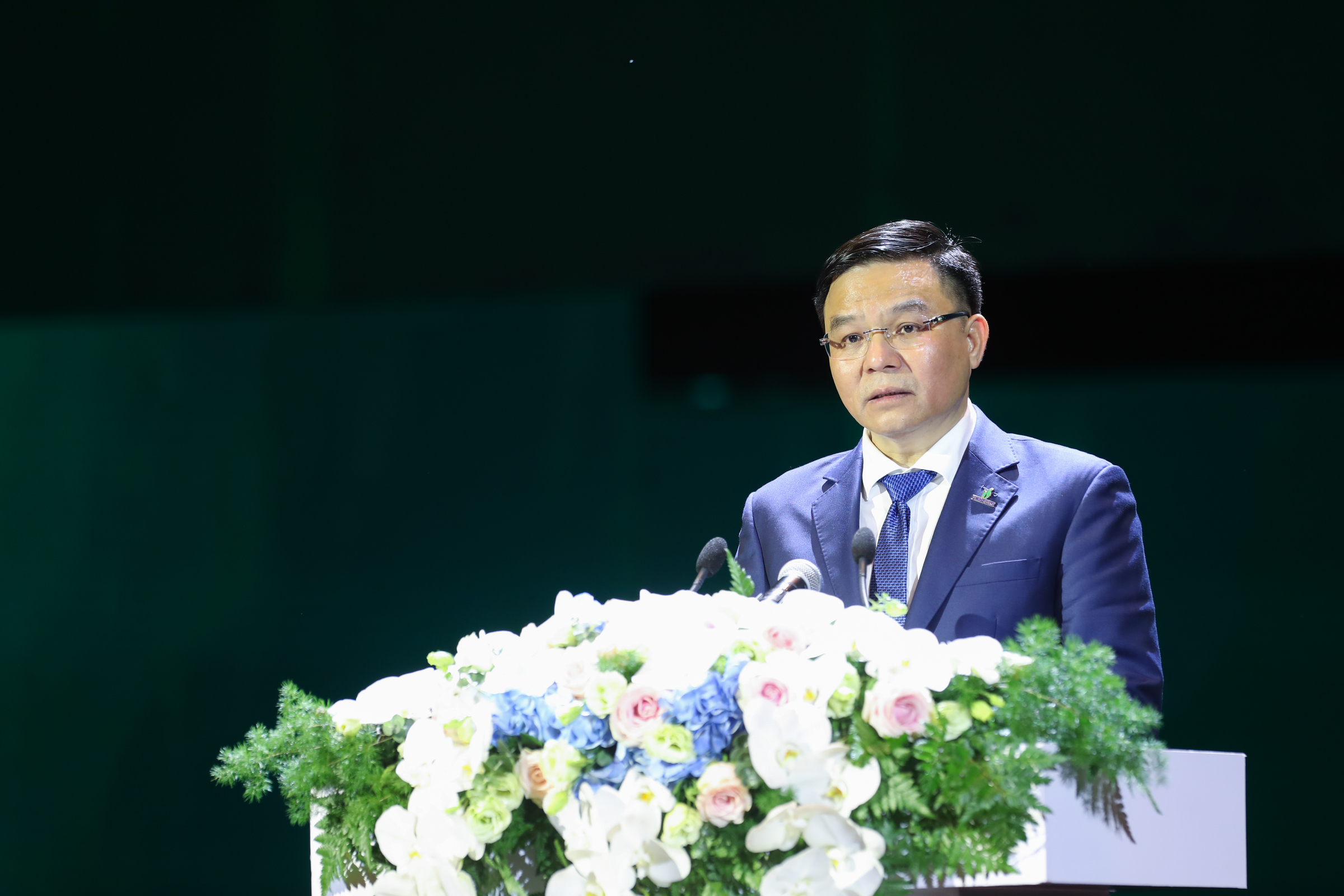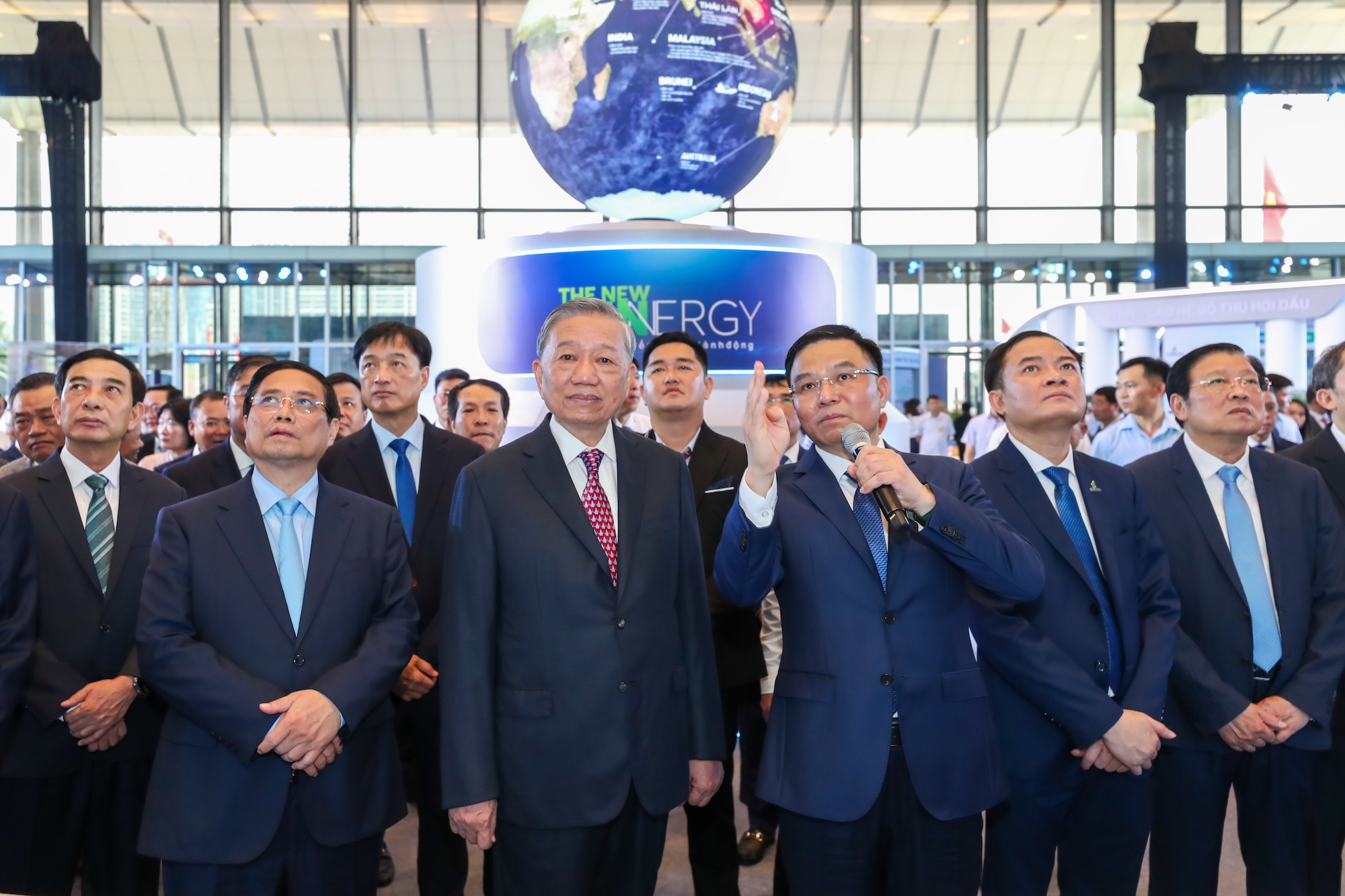At Petrovietnam's 50th-anniversary celebration on 21/9, chairman Le Manh Hung stated that the group has built a complete and modern oil and gas industry with strategic energy infrastructure.
Hung said Vietnam has mastered most core technologies across the entire oil and gas value chain, from exploration and production to refining, chemical synthesis of ammonia and urea, high molecular weight materials, and gas and steam turbine power generation.
Furthermore, Petrovietnam has contributed to global oil and gas science with technologies for oil extraction from bedrock, self-elevating drilling rig manufacturing, and graphene synthesis. They have also trained a highly qualified team of leaders, managers, scientists, and experts.
 |
Petrovietnam chairman Le Manh Hung speaks at the event on 21/9. Photo: Hoang Son |
Petrovietnam chairman Le Manh Hung speaks at the event on 21/9. Photo: Hoang Son
Vietnam's oil and gas industry history is divided into three periods. In the first period, Vietnam created the "1956-1960 northern oil and gas prospects map" with the help of Soviet experts. By 1961, Vietnam completed its first report on geology and oil and gas prospects, led by expert Kitovani S.K.
In the next period, Oil Exploration Team 36 was established on 27/11/1961 with 211 members, including 14 Soviet experts, a capital of 457,000 dong, and 4 rudimentary drilling machines. During this phase, Vietnam studied a large volume of valuable geological data, trained core experts, and discovered the first commercial gas flow on 18/3/1975 at GK 61-Tien Hai, Thai Binh.
The following period marked rapid development after 3/9/1975, when the Vietnam Oil and Gas Corporation (Petrovietnam) was officially established.
Petrovietnam is currently the largest enterprise in Vietnam and a major contributor to the national budget. Last year, the group achieved record revenue, exceeding 1 quadrillion dong, a 36% increase compared to the pre-Covid-19 period (2019). This amount is equivalent to about 9% of the country's total GDP. The group contributed 165 trillion dong to the state budget, accounting for nearly 9% of the country's total budget revenue.
Petrovietnam's chairman stated that the group aims to be among the world's 500 largest companies by 2030. They will focus on science, technology, and innovation, targeting 25% of revenue from this sector. The company also aims to increase international cooperation, investment, export, and business, striving for international revenue to account for 30%.
 |
Petrovietnam chairman Le Manh Hung presents oil and gas products to General Secretary To Lam, Prime Minister Pham Minh Chinh, and other state leaders. Photo: Hoang Son |
Petrovietnam chairman Le Manh Hung presents oil and gas products to General Secretary To Lam, Prime Minister Pham Minh Chinh, and other state leaders. Photo: Hoang Son
General Secretary To Lam praised Petrovietnam's contributions to ensuring "five securities": national security, economic security, food security, national defense security, and social security. The group also achieved the highest scores in five indicators: scale, budget contributions, profit, the number of Ho Chi Minh and State awards for science and technology, and fulfilling social responsibility.
According to the General Secretary, this role is even more significant in the context of rapid global transformations. He suggested that Petrovietnam should ensure national energy security and lead industrialization and modernization.
Petrovietnam should complete oil refining and chemical complexes, develop mechanical engineering for drilling rigs and energy equipment, build national ecological energy centers, and expand high-tech services. The group must also pioneer in science and technology development, innovation, and digital transformation, investing heavily in R&D, AI, and big data.
The General Secretary also emphasized the importance of innovating management according to international standards, tightening discipline, preventing loss and waste, proactively integrating and linking domestic and international chains, encouraging public-private partnerships (PPP), and creating conditions for private sector participation.
To achieve these objectives, he suggested that ministries and local authorities increase decentralization and empowerment, create specific mechanisms for strategic energy projects, and resolve infrastructure and planning issues to create a favorable investment environment.
Phuong Dung












